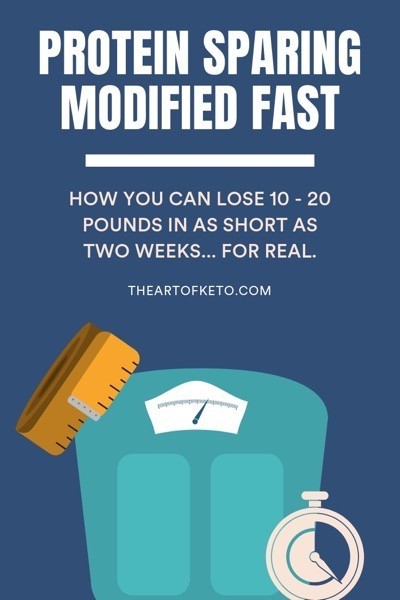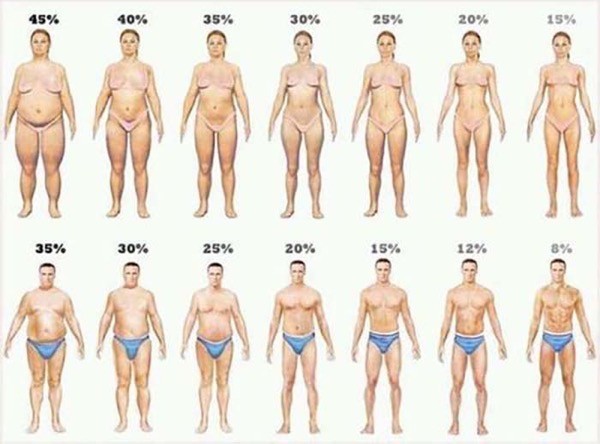A protein sparing modified fast allowed me to lose nearly 15 pounds in less than three weeks the first time I used it.
This isn’t one of those small asterisks * results not typical type of results either.
Many people are literally losing between 10 and 20 pounds in just two weeks.
But be forewarned, it isn’t a diet for the faint of heart. And while this diet will help you lose the weight, it isn’t a diet that will help keep the weight off for you once you finish it, that comes down to making a lifestyle change and developing good habits.
Most people don’t have trouble losing weight, they have trouble keeping the weight off.While keeping the weight off is possible, even after a diet like this, that‘s left entirely up to you. However, I will go over some tips at the end.
If you’re looking for a great way to jumpstart your fat loss diet or have a last-minute bikini body bearing vacation this one is for you.
Let’s dive into how you too can drop a significant amount of weight in a short amount of time.
What is a protein sparing modified fast (PSMF)? A Protein Sparing Modified Fast (PSMF) is a modified form of fasting that is intended to spare as much muscle and lean mass as possible while losing the most amount of weight and fat in the shortest amount of time.

Fasting and intermittent fasting are getting all the attention these days, but what about a protein sparing modified fast? After all, it’s probably one of the MOST effective diets at losing the most amount of fat… while sparing the most amount of muscle, in the shortest amount of time.
I think many people forget about that second part, SPARING THE MOST AMOUNT OF MUSCLE. If your goal is to look better, which I’m guessing it is, then you better be concerned about sparing muscle while shedding the most amount of fat.
Table of Contents
Protein Sparing Modified Fast And Results… What Can You Expect?
First, let’s differentiate between “fat loss” and “weight loss.”
As I mentioned previously at the beginning of this article, what we’re after is actual fat loss, not simply weight loss.
What’s the difference you ask?
I'm glad you asked!
Our weight is made up of everything in our body (muscle, fat, your organs, water, etc.) We can then divide our weight into two parts:
- lean body mass (LBM)
- fat mass (body fat)
Lean body mass encompasses everything our body is made of, except for our fat mass. Our body fat is self-explanatory. Therefore, our goal is to maintain as much lean body mass while losing as much fat mass as possible.
This is the reason using the scale might not always be the best indicator of progress since it can't differentiate the two. The scale may show no change, but you might look better in the mirror or your pants may feel looser.
Ideally, that’s exactly what we want happening. That means you were able to increase your muscle mass or lean mass while losing fat… that’s like the holy grail!

Back to the original question, how much weight can you lose on a psmf?
Better yet, how much stored fat can you lose?
Let me put it into perspective as this will be different for every individual. Obviously, the more weight you have to lose, say compared to a leaner individual, the more you can expect to lose.
A pound of fat contains roughly 3500 calories. So, to lose one pound of fat per week we would need to be in a 3500-calorie deficit, for two pounds of fat 7000 calories, so on and so forth.
With that in mind, let’s use Bobby Joe as an example.
Bobby Joe is a 200-pound male with a maintenance caloric requirement of around 3000 calories. 1
If Bobby Joe eats on average 800 calories per day while using a protein sparing modified fast that equates to a 2200 calorie deficit per day, over 1 week that’s over a 15,000-calorie deficit, and over 2 weeks that’s a whopping 30,000-calorie deficit!
Divide that by 3,500 calories, the amount in one pound of fat, and Bobby Joe is looking at an almost 9-pound loss of fat. He can also probably expect to lose between another 5 to 10 pounds of water.
This leaves Bobby Joe with about a 15-pound drop on the scale in just 2 weeks.
How much you lose will vary based on how much you have to lose to begin with, but it’s not unusual to lose 10 pounds or more… even for smaller individuals.
Who Shouldn't Use A Protein Sparing Modified Fast
It would be irresponsible for me to say any and everyone looking to lose tons of weight should try a protein sparing modified fast. This is a non-sustainable crash diet that should only be used sparingly.
This diet isn’t meant to fix an eating disorder or for people who are classic Yo-Yo dieters.
So why am I telling people about it?
In today’s world, we are so used to instant gratification. People want things NOW, and most individuals don’t have the patience to diet for long periods of time.
But that’s why it also can work.

Let me explain further…
Often times. very low-calorie diets are easier to adhere to than more moderate calorie diets. The rapid weight loss and visual change in the mirror is enough motivation to incentivize people to continue their weight loss journey.
And used responsibly , a protein sparing modified fast (PSMF) can be a great tool for certain individuals.
Who Might Consider A Protein Sparing Modified Fast
I imagine you didn’t glaze over the section above on who a psmf diet may not be good for. Here are classic examples of who might benefit from a protein sparing modified fast.
- Bodybuilders
- Weight class athletes
- Upcoming special event or vacation
- Kickstart a more moderate diet
- Make weight for a procedure of some sort (bariatric surgery)
- Impatient dieters that rather suffer for a short period
How to do a protein sparing modified fast in 3 steps
Remember, this is not a fast in the sense you can only consume water. Instead, we are eating just enough to minimize or eliminate any muscle from wasting away.
And the best macronutrient for that is…
Can you guess? I'll give you a hint… it's in the name. lol
Drumroll… protein.
Therefore, our goal is to eat just enough protein while eliminating carbohydrates and fats to prevent the loss of lean tissue. And you will base how much protein that is on how lean or fat you are combined with your activity level (sedentary, cardio only, resistance training, etc.)
Step 1: Knowing your body fat percentage
To best help you determine how much protein you should eat, I like to refer to the category system borrowed from Lyle McDonald. This category system has you in 1 of 3 categories based on your body fat percentage.
Don’t know your body fat?
You can use this image below as a rough guide to put you in the ballpark.

Once you’ve identified what your body fat percentage, use this table from Lyle McDonald to determine which category you fall under.
Got it?
Depending on your type of activity (or lack thereof), you will scale up or down your protein intake with weight training individuals requiring the highest intake.
And if you aren’t doing resistance training:
- What’s wrong with you
- What’s wrong with you
- Do some, it’s good for you… like, really.
But more about that later in the exercise section.
Step 2: Determining protein intake based on step 1
The following chart, also borrowed from Lyle McDonald, is a guideline for your daily protein intake based on which category you fall under.
This means, for a weight training female (Let's call her Rachel) who has 30 percent body fat, she will consume 1.25 grams of protein per pound of LEAN BODY MASS.
To calculate lean body mass, we must take our total weight and subtract fat weight.
Lean body mass = (total body weight – fat weight)
For our 30 percent body fat female who weighs 165 pounds we would do the following:
Fat mass: 165 x .30 = 49.5 lbs of fat mass
Lean body mass = 165 – 49.5 = 115.5 lbs of lean mass
Rounding Rachel's lean mass to 116, if she was to consume 1.25 grams of protein per pound of lean mass, she would eat 145 grams of protein per day while aiming to keep her fat and carbohydrate intake as low as possible.
To hit this amount of protein while keeping fat and carbohydrate intake low requires you stick to lean sources of protein. I’ll list out some protein sources later in this article, but think chicken breast, tuna, egg whites, protein powder, etc…
This may not be the most appetizing menu, but we’re only doing a psmf for a short amount of time. Heck, you may even find or invent some creative food combination that ends up being delicious, filling, and low calorie. I find times like these brings out the inner culinary artist in many of us.
Step 3: Everything else
Aside from calculating your protein intake and eating just enough protein to prevent muscle loss, the only other foods you will eat will be a small number of non-starchy vegetables. This means almost any vegetable except peas, carrots, and corn is fair game.
With the rise of the carnivore diet and the research that supports it, I’m hesitant to say fiber is “required.” The current literature is in support of vegetable intake so…
Let's leave it as a matter of preference if you would like to add or omit vegetable intake on your protein sparing modified fast. After all, it is only for a short period.
At the very worst, you lose a little less weight since you are eating a few more calories. On the flip side, vegetable intake might help mitigate hunger and keep you satiated on such low calories.
To summarize
Based on your lean body mass (LBM) and current activity you will eat between 0.8 and 2.0 grams of protein per pound of LBM, and a few veggies.
That’s it.
Exercise During A PSMF
Ideally, you would have been weight training before you embarked on such a crash diet.
But, in the big scheme of things, exercise will not greatly improve how much weight you lose on a psmf.
Wait, say again?
You read that correctly.
As a whole, exercise doesn’t burn that many calories, especially compared to what we’re able to achieve daily through a drastic caloric restriction via a psmf.
Then why exercise at all?
Because young grasshopper, we’re after “fat loss” and not just “weight loss.” While exercise, mainly weight training, will not necessarily cause more “weight loss,” it will lead to:
- Greater fat loss
- More muscle retention
- * Muscle gain
- Dietary adherence
- * Prevention of regaining the weight 2
- * Prevention of metabolic rate decline
*Not guaranteed, but is a possibility.

That being said, what kind of exercise, if any, will affect your diet setup. Meaning, if you’re doing just aerobic exercise versus weight training or even no exercise at all will effect how much protein you get to eat.
General exercise recommendations
Too much of anything is a bad thing, this especially holds true for exercise on a psmf. With such little food:
- Our recovery ability is impaired
- We risk more metabolic slowdown
During our protein sparing modified fast, we can dial things back a tad. When I refer to dial back, this is in reference to how many workouts we perform, not your intensity.
If working out less is causing you to stress out just remember it’s only for a short period. Let me repeat that, a psmf is not a long-term solution to weight loss, it’s a crash diet to be used for a short period.
Here’s what I would recommend with aerobic exercise being optional. 3
- Resistance training: 2-3x a week full-body workout
- Aerobic exercise: 2-4x a week 30-50 minutes moderate intensity
It’s that simple.
Recommended Supplemented For A Protein Sparing Modified Fast (PSMF)
Being that a psmf is restrictive by nature, it leaves us little in terms of actual “nutrition.”
The following is a list of recommended supplements to accompany your protein sparing modified fast.
The supplements I recommend are the ones I personally use after researching companies and looking at 3rd party lab reports to ensure quality.
Not all supplements below are required, but the least I would supplement with is fish oil since fats in our diet are essential.
I recommend krill oil specifically since it's considered more bioavailable due to the essential fatty acids bound to phospholipids. 4
We can consider the other supplements bonus to optimize the diet further if you wish to do so.
* This may be one of a handful of times I might even recommend exogenous ketones as it can help with energy levels and cognitive function during this period of severe restriction.
Fish oil
Multivitamin
Electrolytes
Fiber supplement
Exogenous Ketones
Click on the banner and use code AOK for 15% off your purchase
Protein Sparing Modified Fast And Keto
From my experience, coming to a psmf from a ketogenic diet is a much easier transition than someone coming from a carbohydrate-based diet.
Since the ONLY requirement to establish and maintain ketosis is a reduction or elimination of carbohydrates, it’s possible you’ll be in a state of ketosis while on a psmf. I find those coming from a ketogenic diet and already keto-adapted have an easier time, especially with energy and hunger.
PSMF And Bodybuilding
While a protein sparing modified fast isn’t ideal long term, often physique competitors such as bodybuilders can use a psmf to kick-start a more sustainable diet.
Some may even choose to combine a keto diet and bodybuilding at the front part of their diet to increase insulin sensitivity from a long time of high carbohydrate intake.
There are also two other scenarios I see physique competitors using a psmf.
- If you’re behind schedule
- To get off that last bit of fat (in which case you should have allowed more time to diet)
Protein Sparing Modified Fast Calculator
Though not a specific psmf calculator, you can use my keto macro calculator as an easy way to determine your protein intake. Input your stats into the calculator, any activity level will suffice, and use the protein recommendation at the bottom.
This means you will ignore the fat and calories column since we are only concerned with protein intake.
Carbohydrate and fat intake should be negligible and limited during this short duration.
PSMF Food List
The psmf isn’t meant to be a culinary feast. While options are limited, you can still get away with ways to make more food palatable including 0 calorie spices and condiments.
Just make sure you are looking at labels to make sure whatever you are using is calorie free or ~5 calories at the most. You can also get away with small amounts of condiments such as salsa or Pico de Gällö if you are using it sparingly (couple tablespoons or so).
Protein sources
- Chicken breast
- White fish
- Turkey breast
- Tuna
- Egg whites
- Protein powder
- Shrimp
- Fat-free cottage cheese
- Fat-free Greek yogurt
Vegetable sources
- Green leafy vegetables
- Broccoli
- Cauliflower
- Mushrooms
Spices and condiments
- Spices and herbs
- Mustard
- Soy sauce
- Lemon juice
- Vinegar
- Broth or bouillon
- Wasabi
- Anything calorie free really
Beverages
- Water
- Coffee (black)
- Tea (herbal and plain)
- Diet soda
- Any other sugar-free 0 calorie drinks
Protein Sparing Modified Fast Recipes
Unlike many, I can probably eat the same bland thing day in and day out. Honestly, it’s easier keeping things simple, but for many others, it may increase adherence to have a little culinary diversity in their diet… even on a psmf.
Therefore, here are a few recipes that are simple and compliant to a psmf.
All credit goes to Allie Faden of the pig and I blog.
Tuna Salad
- 1 – 6 oz can tuna packed in water, drained
- 1 teaspoon celery, chopped
- 1 tablespoon dill pickle relish
- 1 teaspoon prepared yellow mustard
- 1 tablespoon fat-free mayonnaise
- Salt and pepper to taste
- 1/4 teaspoon dried dill weed
- 1 teaspoon lemon pepper
Total: 134 cal/26g protein/1g fat/3g carb
Grilled Lemon Pepper Chicken
- 5 oz chicken breast
- 1 teaspoon lemon pepper
- 1/4 teaspoon chili powder
- Place chicken between two layers of plastic wrap.
- Pound out to 1/2” thickness.
- Season the chicken with chili powder and lemon pepper. Grill chicken for 5 minutes on each side or until fully cooked.
Total: 158 calories/30g protein/2g carb/5g fat
Cottage Cheese and Grapefruit Dessert
- 40 grams red grapefruit sections, cut up
- Sweetener of choice
- 100 grams fat-free cottage cheese
- 1/4 teaspoon vanilla extract
- Mix together.
Total: 89 calories/17g protein/5g carb/0g fat
Turkey and Spinach Omelet
- 1 cup baby spinach, washed and thoroughly dried
- 87 grams (~ 3 oz) roasted turkey breast
- 1 cup egg substitute (recommend: Egg Beaters)
- nonstick cooking spray
- 1/4 teaspoon salt
- Heat an 8” omelet pan over medium heat, then spray with nonstick cooking spray.
- Add turkey to pan and heat up.
- When the turkey is warmed, add spinach and salt. Saute for one minute, then remove turkey and spinach.
- Re-spray pan if necessary. Add egg substitute, allowing to cook. Lift sides periodically to allow the egg to drain underneath (so it can finish cooking).
- When nearly cooked through, return spinach and turkey to the pan (on one side of the egg), and fold egg over.
- Cook for another minute to allow the egg to finish cooking.
Total: 245 cal/50g protein/5g carb/1g fat
Ending the diet
In the beginning, I mentioned that losing weight was easy for most people, it was keeping the weight off that was hard. Preventing weight regain after a psmf is no different, probably even harder.
If you jump straight back into what you were doing before the diet, you’ll just get fat again. If you don’t care and you only wanted to hit your goal weight for that special occasion, then you do you.
For all others.
Once you come off the diet and eating some “normal” foods again, you’ll inevitably regain a few pounds, most if not all of this will be because of glycogen 5 and water.
Don’t be alarmed!
Your goal at this point is to eat at maintenance calories. Eating enough calories to maintain your weight. This number will be different for everyone, but a good starting point would be to multiply your weight in pounds by 13 and adjust accordingly.
While you should expect a few pounds right away from increased food, water, etc. this should normalize within a couple of days. Meaning, you can dismiss the first couple days until your weight stabilizes before there is cause for alarm.
Don’t like to weigh yourself often? Then take photos or use your favorite pair of jeans as an indicator. Whichever metric you choose, just be mindful of any changes being made.
This is also a good time to incorporate exercise if you haven’t done so up till now. As I mentioned previously, one key habit of successful dieters who keep the weight off is exercise.
Final Thoughts And Considerations
A psmf can be a very effective tool and shedding a massive amount of weight (10-20 pounds) in as short as 2 weeks. However, our goal shouldn’t simply be weight loss, it should be maximum FAT loss.
We can best achieve this by keeping our protein intake up and including bouts of exercise, preferentially weight training.
Other than that, a psmf is a relatively simple diet you shouldn’t over-think. You are mainly sticking to very lean protein sources, some green leafy vegetables, and a few supplements if any.
That’s it.
Have you tried a psmf before? If so, what were your results?
